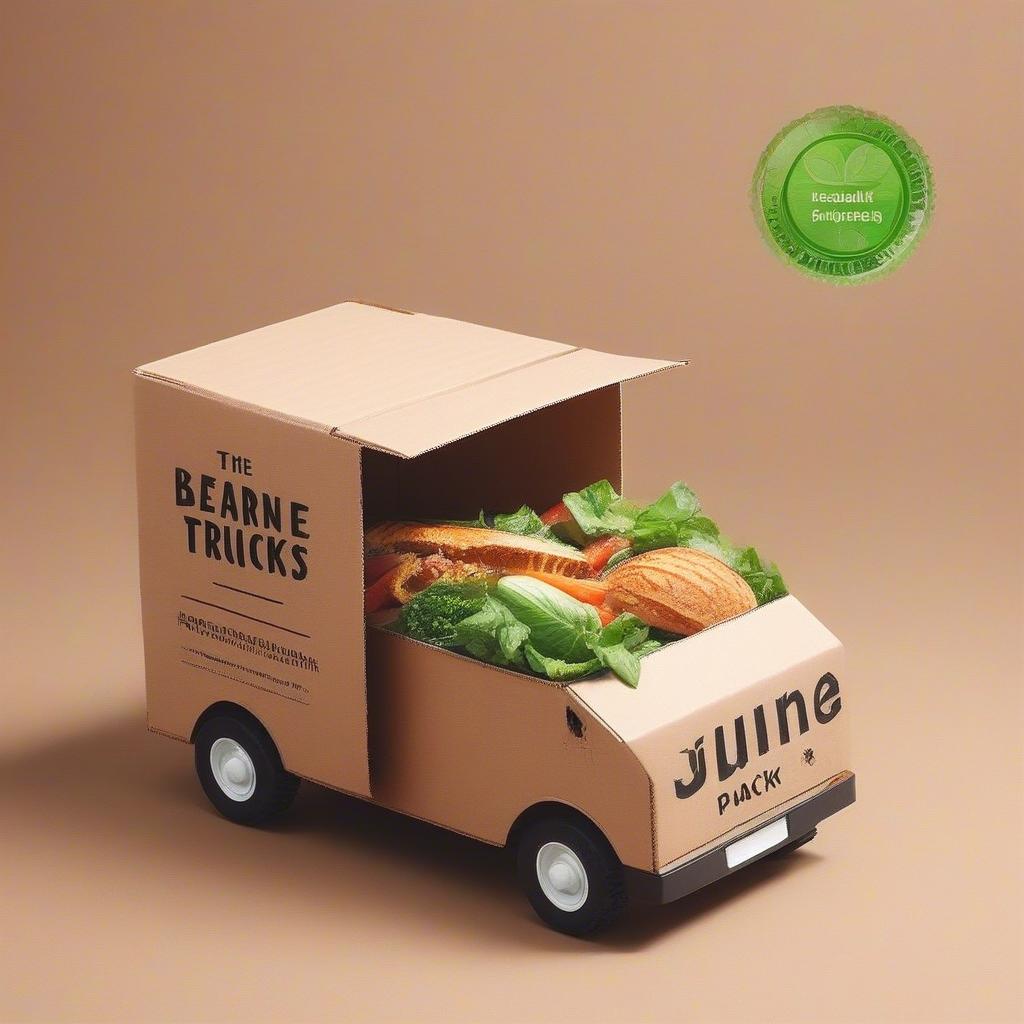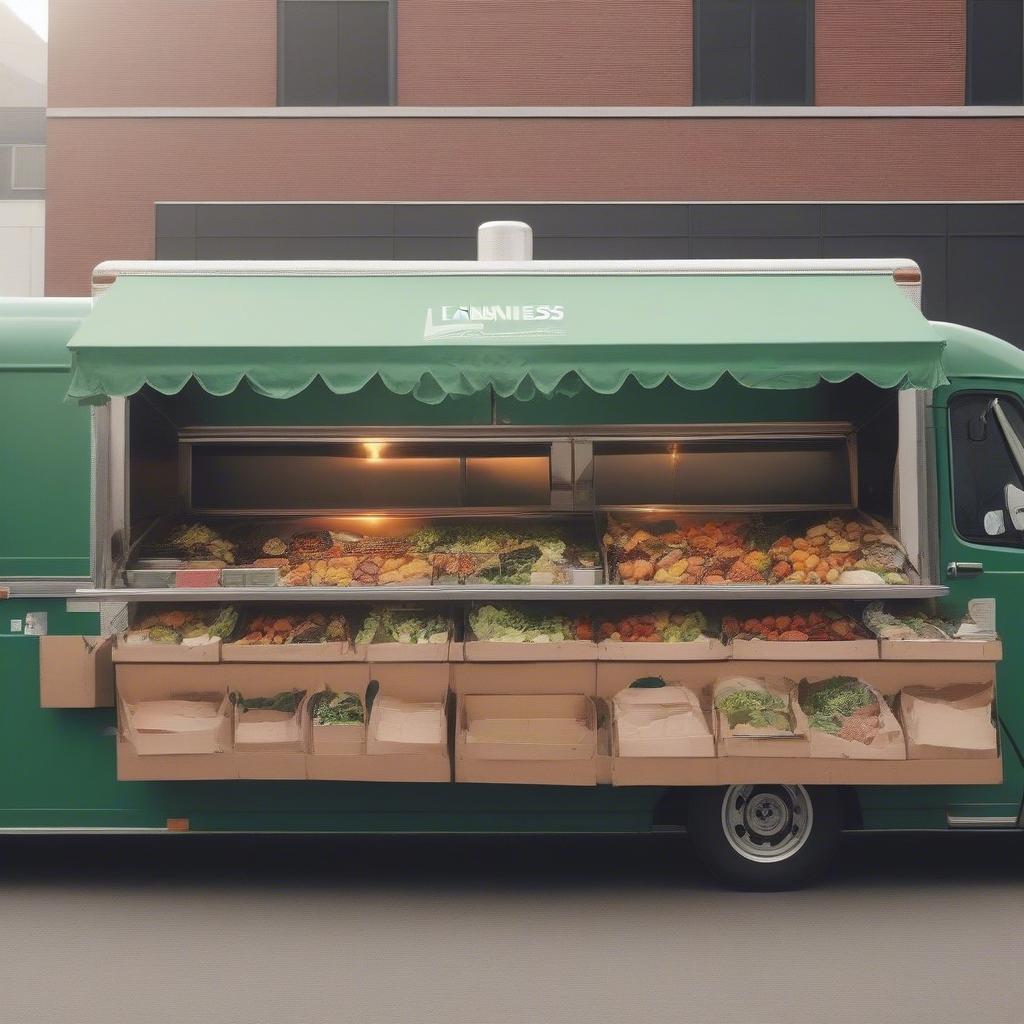
Running a food truck is an adventure, a delicious dance between culinary creativity and logistical mastery. And at the heart of that logistical dance? Inventory management. It’s not just about counting cans; it’s about ensuring you have the right ingredients, at the right time, in the right quantities, so you can keep serving up those crowd-pleasing dishes without a hitch. Poor inventory management can lead to spoiled ingredients, missed sales, and a big dent in your profits. So, let’s dive into the best practices for keeping your food truck humming along smoothly.
Why is Inventory Management Crucial for Food Trucks?
Imagine you’re about to serve your signature tacos, only to discover you’re out of tortillas. Frustrating, right? That’s just one example of the chaos that can arise from neglecting inventory management. Here’s why it’s so vital for your food truck:
Preventing Food Waste & Saving Money
- Spoilage Control: Food spoils quickly, especially on the go. Effective stock tracking allows you to rotate ingredients properly (FIFO – First In, First Out) minimizing waste and saving you money.
- Accurate Ordering: Knowing exactly what you need prevents over-ordering which can lead to ingredients expiring and ending up in the trash rather than on a customer’s plate. You only buy what you can sell within the ingredients’ shelf life.
- Reduced Loss: When you’re organized with your inventory, there’s less chance of misplacing items or forgetting about stock hidden in the back, reducing waste.
Maximizing Profits
- Efficient Operations: Having a handle on your inventory management translates to streamlined operations, meaning faster service and more satisfied customers.
- Consistent Menu Availability: No customer wants to hear “Sorry, we’re out!”. Managing your ingredients ensures you can consistently offer the dishes you advertise, maximizing sales potential.
- Cost Control: Understanding what’s costing you the most allows you to negotiate with suppliers, make smarter menu choices, and ultimately boost your bottom line.
Keeping your Food Truck Organized
- Streamlined Operations: An organized food truck is a happy food truck. Knowing exactly where each ingredient is located means less frantic searching and more focus on creating mouthwatering meals.
- Easier Stock Takes: Regular physical inventory checks become faster and more efficient, making it easier to identify discrepancies and make adjustments to your ordering.
- Professional Image: A well-organized truck projects an image of professionalism, attracting more customers and improving your overall reputation.
Setting Up Your Food Truck Inventory System
Okay, so you’re convinced. Let’s get down to brass tacks. Setting up an efficient inventory management system is like building a solid foundation for your business. Here’s how to get started:
1. Choose Your Method
There are a few different ways to approach stock tracking, each with its pros and cons:
- Manual Spreadsheets: A simple starting point, spreadsheets allow you to log your inventory by hand. Easy to set up but time-consuming and prone to human error as your business grows.
- Inventory Management Apps: There are numerous apps designed for small businesses, offering features like barcode scanning, real-time tracking, and automated alerts when your stock is running low. Easier to use and more efficient than spreadsheets once implemented.
- Integrated Point-of-Sale (POS) Systems: Some POS systems include inventory management capabilities which can provide data based on your sales transactions. This gives you a real-time view of what you’ve sold and what you should have on hand.
Which is right for you? If you’re just starting out, a spreadsheet can work well. As your business grows, consider upgrading to an app or integrated POS system.
2. Create a Comprehensive List
Your stock tracking system will be only as good as the list of items you are monitoring. Make a list of every single ingredient and consumable item you use. Don’t forget things like:
- Produce: Vegetables, fruits, herbs
- Proteins: Meats, fish, tofu
- Dairy: Milk, cheese, yogurt
- Pantry Staples: Grains, oils, spices, condiments, etc.
- Packaging: Takeout containers, cutlery, napkins, etc.
- Drinks: Sodas, bottled water, juices
- Cleaning Supplies: Soap, sanitizers, cloths
- Other Consumables: Gloves, paper towels
Assign each item a unique identifier (e.g., a code or number) to keep things organized.
3. Set Par Levels
Par levels are the minimum amount of each item you should have on hand before reordering. These are your safety nets, ensuring you never run out of essentials. Your par levels should consider:
- Average Sales: How much of an ingredient do you typically use in a day or a week?
- Lead Time: How long does it take for your suppliers to deliver an order?
- Storage Capacity: How much space do you have to store ingredients?
- Shelf Life: How long will the ingredient last before it goes bad?
For example, if you use 50 tortillas a day and it takes two days to get a delivery, your par level should be at least 100 tortillas. Regularly review and adjust your par levels as your business evolves.
4. Implement a Stock Rotation System
The best food truck stock tracking system in the world will be ineffective if you don’t use your ingredients in the order you receive them. It’s crucial to use the FIFO system (First In, First Out). Here’s how:
- Label Clearly: When you receive deliveries, label each item with the date of arrival.
- Organize Storage: Place the items with the earliest dates at the front of shelves so you use them first.
- Regular Rotation: When restocking, always move the older items to the front.
5. Develop a Daily and Weekly Routine
Consistency is key. Develop a routine for inventory management and stick to it. Here’s an example:
- Daily: During the opening and closing of your food truck perform a visual check of commonly used ingredients.
- Weekly: Do a complete stock take of every item. Compare physical counts with your system and update it. Place your orders for the week.
- Monthly: Analyze your usage patterns to adjust your par levels and order quantities. Negotiate deals with suppliers, if necessary.
6. Utilize Technology to Streamline the Process
Technology can be your best friend when it comes to inventory management. Consider tools like:
- Barcode Scanners: Easily scan items to add them to your system, reducing errors and saving time.
- Inventory Management Apps: Use apps that integrate with your POS, track expiry dates, and generate alerts for low stock.
- Order Management Systems: Streamline the process of ordering from suppliers, including automatic ordering when stock reaches par levels.
- Reporting and Analytics: Use the data provided by your system to understand trends and make informed decisions.
Practical Tips and Strategies for Food Truck Inventory Management
Now, let’s move from theory to practical, actionable advice. Here are some essential food truck tips for managing your inventory like a pro:
Optimize Storage Space
Food trucks are notoriously short on space. You need to be creative and efficient:
- Vertical Storage: Utilize shelving to maximize vertical space.
- Stackable Containers: Use stackable containers to keep items organized and save space.
- Clear Labeling: Clearly label each container to quickly find what you need.
- Designated Areas: Assign specific storage areas for different types of ingredients.
- Frequent Checks: Keep an eye on your food truck’s interior and exterior storage for any issues that can affect the quality of your food.
Manage Perishable Items Carefully
Perishable ingredients are the trickiest to handle. Here are some tips to ensure they stay fresh:
- Temperature Control: Keep perishables at the correct temperatures. Use coolers and freezer units when appropriate.
- Regular Checks: Daily checks on produce to ensure there are no spoilage signs and discard immediately any damaged or spoiled items to prevent them from affecting the others.
- Proper Storage: Store meat and poultry separately from produce and dairy to avoid cross contamination.
- Plan Ahead: Order perishable items in smaller quantities more frequently to ensure they stay fresh.
Master Portion Control
Portion control is not just about serving consistent sizes to customers, but also about managing your stock tracking effectively:
- Standardized Recipes: Use standardized recipes to ensure consistent ingredient usage.
- Pre-Portion: When possible, pre-portion ingredients during prep time to speed up service and minimize waste.
- Train Staff: Train your staff on correct portion sizes so they know how to prepare consistent dishes.
Adjust Menu According to Stock
Don’t be afraid to get creative. If you have an abundance of one ingredient, create a daily special or dish featuring that item. This will help you reduce wastage and maintain good profit.
Negotiate with Suppliers
Build strong relationships with your suppliers. Negotiate for the best prices, delivery schedules, and payment terms. Consider:
- Bulk Discounts: Purchase in bulk when you can, but only if you have the storage capacity and will use items before their expiration date.
- Flexible Deliveries: Work with suppliers who can deliver on a schedule that suits your needs.
- Regular Communication: Maintain open communication to anticipate any potential supply shortages.
Invest in the Right Equipment
The right equipment can significantly improve your inventory management:
- Refrigeration Units: High quality, reliable refrigeration units to keep your perishable goods fresh.
- Freezers: Chest freezers are better for storage purposes than upright freezers since they use less energy.
- Storage Containers: Stackable, clear storage containers to easily organize and see your stock.
- Digital Scales: Digital scales to accurately measure ingredients.
Keep Accurate Records
Maintain detailed records of your purchases, sales, and waste. This information will help you make informed decisions about your inventory management in the future. Keep records of:
- Purchase Orders: Record every item you order, including the date, cost, and quantity.
- Sales Data: Track what items are selling well and what is not.
- Waste Logs: Record the amount and types of waste you are producing. This can help identify areas for improvement.
Learn Business: Your Partner in Food Truck Success
Running a food truck can feel like a whirlwind of activity. You’re juggling recipes, customers, permits, and of course, inventory. That’s where Learn Business can step in. We understand the unique challenges you face, and we offer the guidance and tools you need to thrive. We’re your support system.
How Learn Business Supports Food Trucks
We provide personalized business support, tailored to the needs of food trucks. This includes:
- Comprehensive Guidance: Step-by-step guidance on all aspects of your business, from financial planning to marketing strategies.
- Customizable Templates: Time-saving templates for inventory management, financial tracking, and more.
- Expert Advice: Access to experienced business mentors who can offer practical, real-world advice.
- Ongoing Support: We’re here for you every step of the way, from initial setup to expansion.
Templates Tailored for Food Trucks
Learn Business offers a wide range of templates to help simplify your operations, including:
- Inventory Management Templates: Track your inventory levels, set par levels, and manage your orders with ease.
- Cost Analysis Templates: Determine the true cost of your dishes and maximize your profit margins.
- Sales Tracking Templates: Monitor your sales performance and identify trends.
- Daily and Weekly Inventory Tracking Sheets: Maintain a clear log of what you have on hand to easily adjust stock and ensure freshness.
- Supplier Contact List Template: Keep track of contacts and important details for all suppliers to ensure easy reordering.
Making Inventory Management Simple
We understand that you are not running a big corporation and you have many hats to wear. We provide you with simple but powerful tools to:
- Streamline your processes: With our tools you will be able to streamline all of your inventory management tasks making it less time-consuming so you can concentrate on making great food.
- Improve accuracy: Our templates help you track your inventory accurately.
- Reduce waste: Our systems and practices help you identify waste and help you minimize it, saving you money.
- Boost your profit: By controlling your costs and avoiding waste, you boost your bottom line.
By implementing these best practices and using the right tools, you’ll be well on your way to mastering inventory management and running a successful food truck. Remember, efficient stock tracking is not just about counting ingredients; it’s about building a sustainable, profitable business that can continue to delight customers for years to come. It’s about finding the right balance for your food truck and your menu, which is what will bring repeat customers. If you feel you need help, let Learn Business support you on your food truck journey.



Leave a Reply